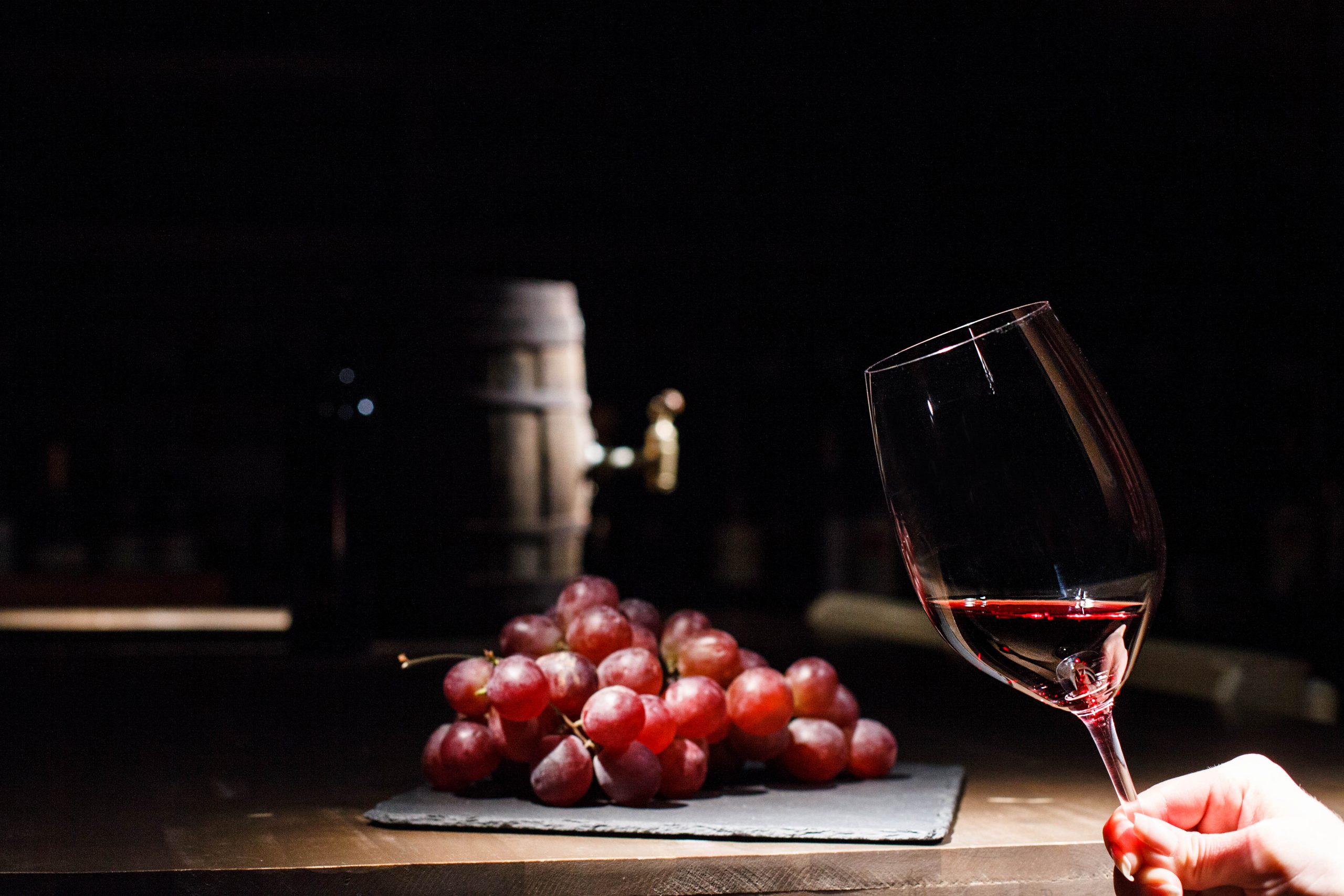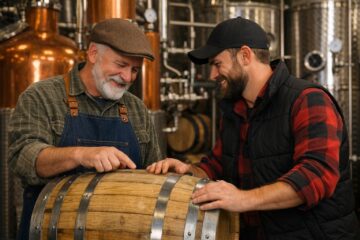Tips for choosing the right container for keeping moonshine, wine, or whiskey. Which barrel to choose for the needs of the moonshiner? The farm of any more or less experienced distiller should have one, and maybe even several oak barrels. So why especially oak barrel?
Why buy an oak barrel?
Due to its high density, its wood remains airtight for a very long time, and upon contact with alcohol it gives off taste, aroma, color, and whiskey, bourbon, calvados, tequila are obtained from moonshine. It all depends on the raw materials from which this moonshine is made.
How does one barrel differ from another?
- First, of course, the material from which it is made. Different types of oak give a different taste and even the growing conditions of the tree matter.
- Secondly, in volume, there are small, large, and very large barrels. It is important to understand that the smaller the barrel, the more area of wood per liter of drink, which means the aging process will be more intensive, which means it will take less time. For the home, it is recommended to take a barrel of at least 10-15 liters, this is important because, over time, some of the contents are lost, in the slang of distillers this is called “the angel’s share”, the angel also never likes to drink and in six months uses up to half a liter, at least out of five even from a fifteen-liter oak barrel.
The result of exposure is influenced by many other circumstances: temperature, air humidity in the room where the barrel is stored, and exposure time.
The age of the keg also matters. The fresh barrel contains a large amount of substances that will be shared with the drink.
What is Oak Aging?
Oak aging is the evolution of alcoholic beverages. Without aging, we would be left alone with only a high-quality and tasty distillate no more. However, a coincidence, trial, and error in preparing barrels gave the world whiskey, tequila, bourbon, cognac, and armagnac. It’s time for us to turn to the experience of our ancestors, so to speak, and create, to enrich the distillate with the aromas of vanilla, coffee, coconut, cloves, and smoke, in a word, everything that a barrel of oak wood can give. Thoughtfully choose a wooden container, properly prepare it, and fill it with a high-quality distillate from the appropriate ingredients, and your drink will be not just an “imitation”, but also a completely authentic product. According to conservative estimates, the oak barrel is the same age as the ancient Romans, but now about something else.
Wood barrel parameters for home use
Now about the parameters of the selected barrel for home use. As already mentioned above, the smaller the barrel, the more correspondingly the product matures in it faster, it depends on the contact area.
A few numbers, a 5-liter barrel has 2000 cm2 of contact area, 1 liter of distillate will have 400 cm2 of wood with all its bonuses. For contrast – a barrel with a volume of 50 liters and a contact area of 7600 cm2, here 152 cm2 will be obtained for 1 liter of distillate. Based on this, we get the first parameter of choice – the capacity of the barrel, from 5 to 50 liters.
In a small barrel, the product acquires the desired color and aroma much faster. However, it is worth considering that for such a “home” volume, long-term exposure is unrealistic, because of the love of angels for high-quality alcohol. The 1.5% share of angels is very optimistic, in fact, they will get up to 7%. For a factory, for example, a 200-liter barrel, such an annual loss is not critical. But in a home barrel of 5-50 liters with standard losses of 200-500 ml per month, the years will leave a void.
Hence another mandatory point – the barrel must be waxed, if when buying such a coating it is not on it, it is better to work hard and wax the barrel. Waxing will win back from angels up to 200 ml/month. By the way, the necessary gas exchange is not going anywhere.
Another way to reduce the proportion of angels is to create humidity in the range of 65-75% while losing strength. The drink will grow stronger in a dry place, but the proportion of angels will increase. A drink aged in an apartment will ripen faster than in favorable conditions with the required humidity and temperature.
Approximate terms of keeping “fire water” at room temperature (with a capacity of 5 liters):
- Bourbon, curry whiskey – 3-4 months;
- Whiskey, barley malt distillate – 5-10 months;
- Calvados, cider and brandy distillate, fruit distillate 4-6 months;
- Cognac, distillate from grape mash – from 4 months.
We got to the direction of the riveting fibers. Oak barrels can be “cut” into planks by sawing (sawn) or split (chipped), of course chipped is preferable, but that’s how you get it. In short – in the description of the product there is a chopped oak – our option. But don’t expect it to be cheap.
In the era of Internet trading, it is better to thoroughly study the reviews of the cooper’s product you choose and cooper’s work in general, it is better to study the forums for an extra couple of hours than to buy a second barrel later, since a low-quality barrel cannot be fixed and saved.
Wood is the most important property of our barrel, as it determines the taste. There are not enough French oak groves for everyone, and there is no reason, for strong alcohol this is not a panacea, world-famous brands, and with them, all the others use such species as European rocky, English and North American white – loved by the Scots.
In total, there are about 300 species of the mighty plant, trees grown in the countries of Eastern Europe and Russia are quite suitable for our purposes. For home aging (how to start with homemade wine), coopers made of oak from these countries are ideal in terms of price–quality ratio.
Another difference, this time drying the boards: the mass and quick method is the use of drying chambers, the traditional method involves drying in the open air (terroir drying) – long and expensive.
And for sweet roasting. Roasting helps to make even the most suitable wood suitable for aging alcohol, to “refine” the drink, to fully reveal the taste and aroma. Roasting is a must for cheap oak. Not all “correct” wood casks undergo this process.
There are three degrees of firing:
- A light degree of roasting betrays a light vanilla aroma, floral notes and ripeness of late fruits are present. These barrels are great for aging white wines.
- The medium roast has more intense vanilla accents, coconut, notes of caramel and spices, almonds and even reminds of a toasted crust of bread. With such a roasting, we boldly age wines, brandy, and calvados.
- Strong firing is already quite clear – chocolate and smoke ambergris. Ideal for fortified wines and bourbon, and then of course whiskey and apple distillate – calvados – are great.
And finally, the important thing about hoops, a crane or lack thereof. Here you can talk a lot about what is better, but usually, you have to put up with what is. Hoops are ideally made of materials that are least susceptible to corrosion – stainless or galvanized steel, and brass. Untreated steel over time is not only not aesthetically pleasing, but also unsafe.
Now an option is a tap or not. If there is a faucet, then there is only a wooden place for it, remove the metal and hammer the plug in its place.
Based on the foregoing, we obtain the following recommendations for choosing a suitable moonshine for home aging in an oak barrel:
- Capacity 10-50 l; Chipped riveting;
- Country of origin of wood: France or Canada;
- Waxed, or getting ready to be waxed by ourselves;
- The degree of roasting is not lower than medium, light roasting – for white wine;
- Better without a tap, in extreme cases – with a tap from that tree;
- With hoops made of stainless steel or galvanized.
We hope we helped you with the choice, now you can check the oak barrels catalog for sale.




